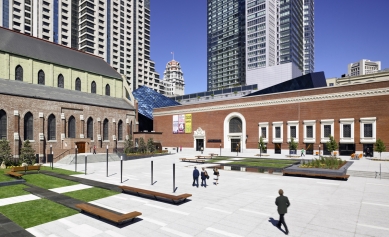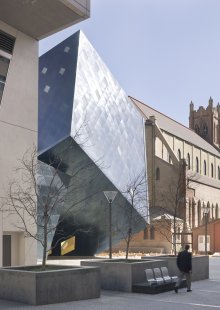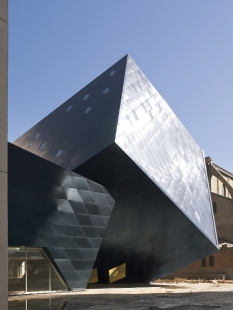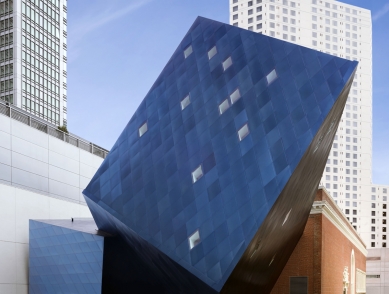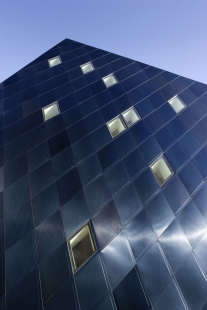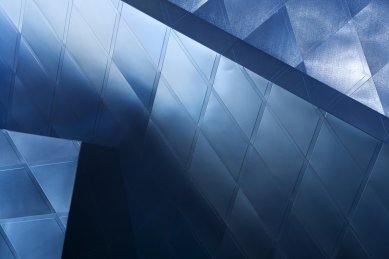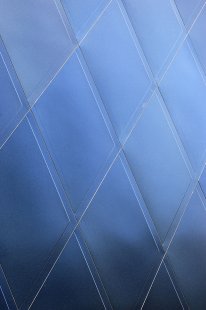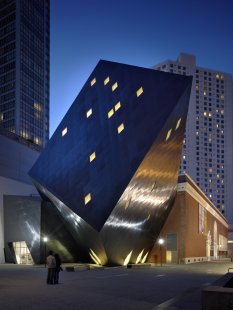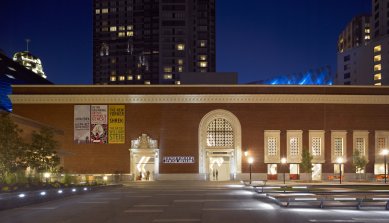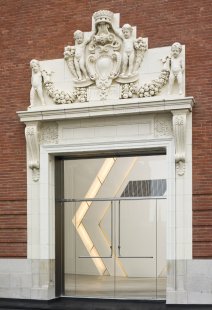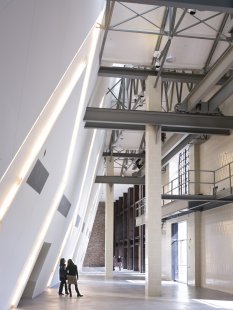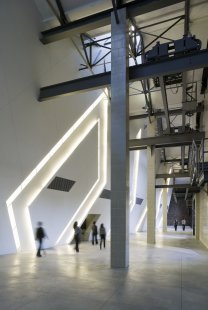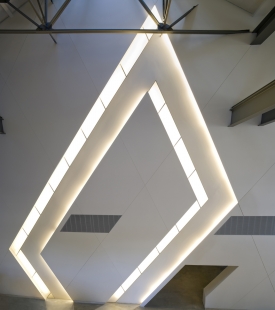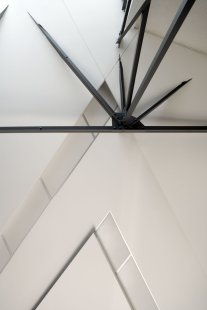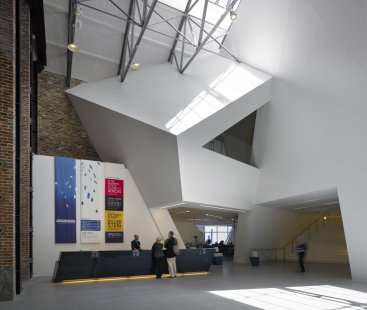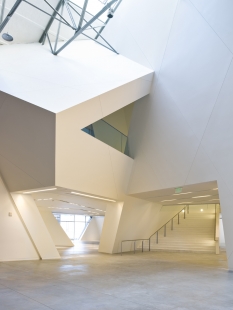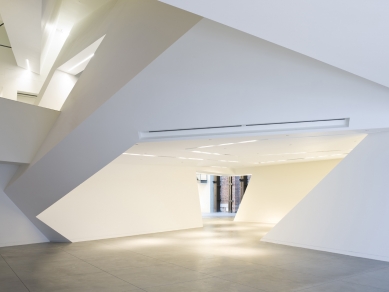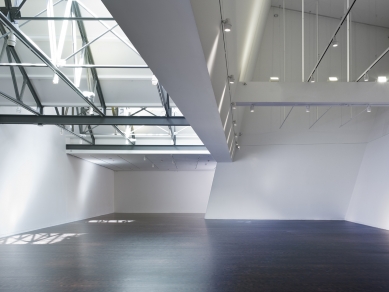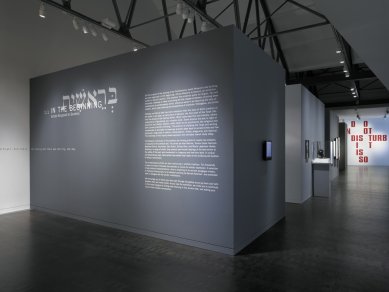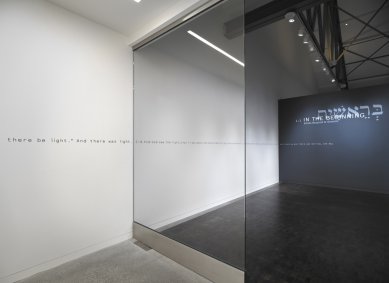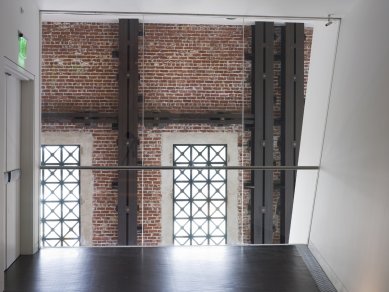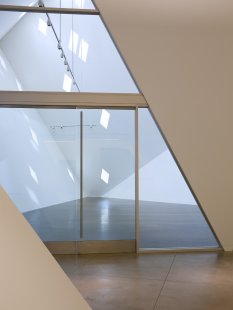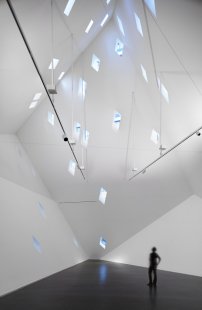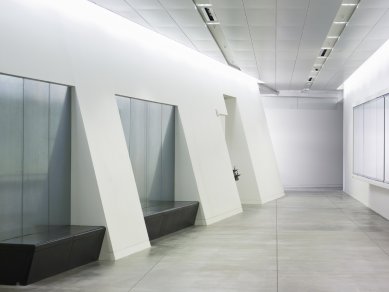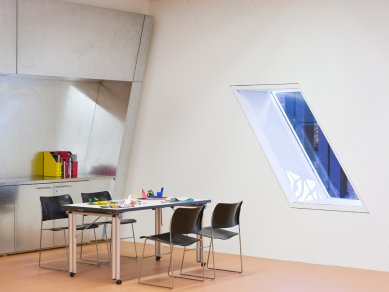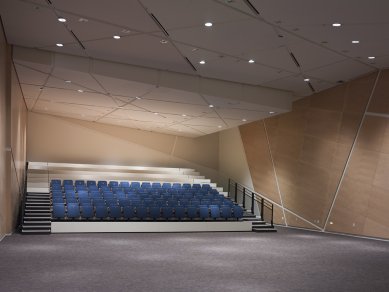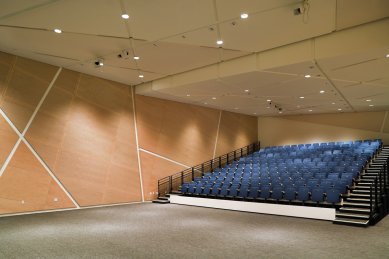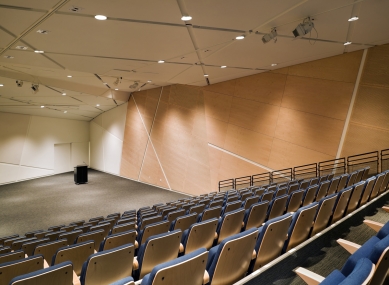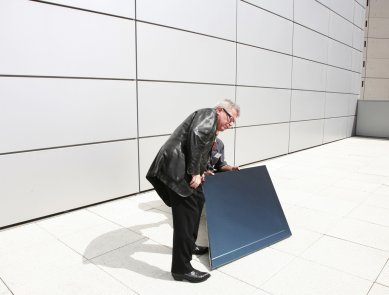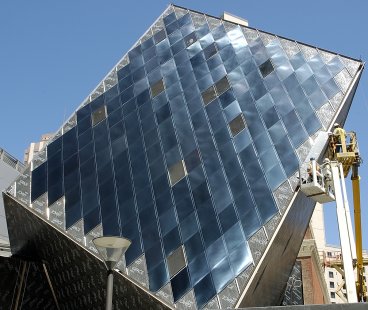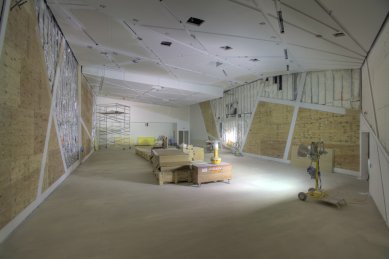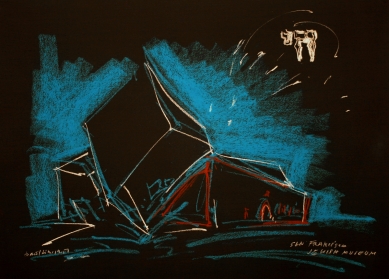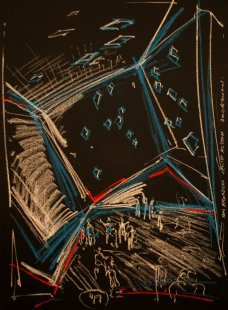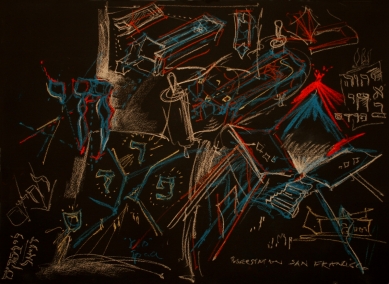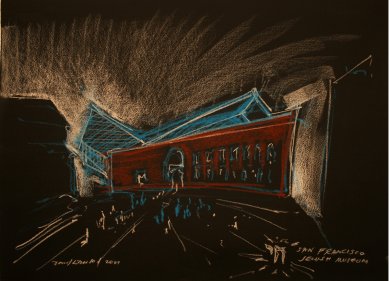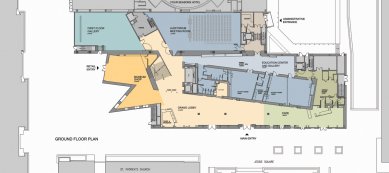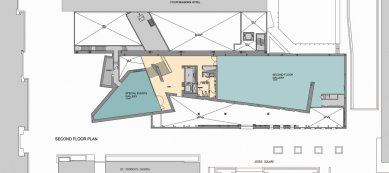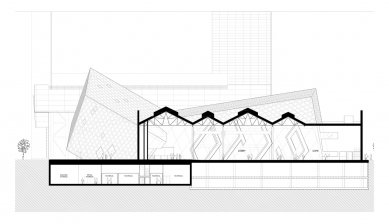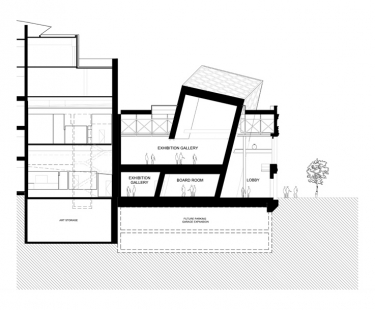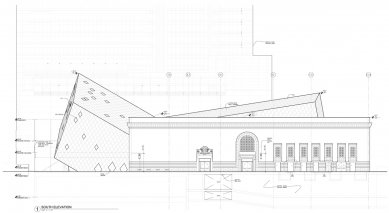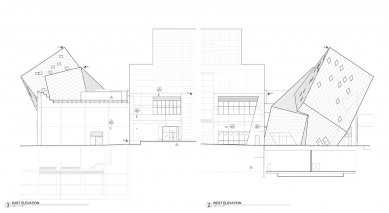
Contemporary Jewish Museum, San Francisco

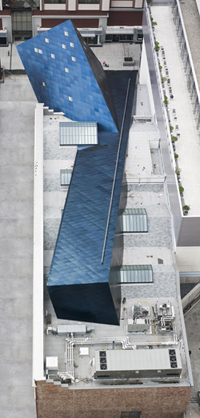 |
| Photo: Mark Darley - Courtesy of the Contemporary Jewish Museum, San Francisco |
In 1998, the design for the building was awarded to the then still relatively unknown Daniel Libeskind, who was just finishing the Jewish Museum in Berlin and Felix Nussbaum Haus. Thus, the CJM building became his first museum building designed in North America. The design was presented to the public in 2005.
Libeskind preserved the characteristic elements of Polk's original building, such as the brick southern facade, truss beams, and skylights, and intersected it with a new dynamic mass, clearly highlighting the relationship between tradition and innovation.
Similar to other buildings for Jewish organizations, this Libeskind design carries Jewish and Kabbalistic symbolism. Libeskind was inspired by the Hebrew phrase "L’Chaim". Jews pronounce it during a toast as an equivalent to the Czech "Na zdraví!" This phrase can be understood as a reference to the important role that the Jessie Street transformer played in the revitalization of San Francisco after the devastating earthquake of 1906, while also pointing to the role of the museum as a living center that enchants visitors with Jewish culture. The form of the museum's extension is based on two symbolic Hebrew letters from the word chai: chet is the eighth letter in the Hebrew alphabet, and yud is the tenth. The numerical equivalents of these letters are very important in the Kabbalistic system of gematria, simplified as 8+10=18, and 18 represents the word chai. Additionally, in Jewish culture, the number 18 symbolizes a lucky number (for example, financial donations are usually in amounts that are multiples of 18).
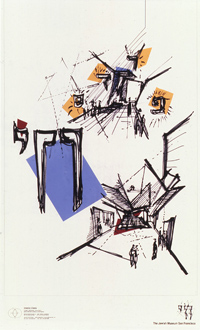 |
| Sketch concept of CJM. © Studio Daniel Libeskind |
From the exterior, the museum's extension is unmistakable due to its unique shape and bright blue metal surface. Inside, both structural and symbolic elements are elegantly highlighted, creating an aesthetically striking and architecturally interesting spatial experience.
The facade of the new section consists of 3,000 panels of blue stainless steel (1,800 panels are whole and 1,200 are individually shaped). They are suspended on a special aluminum non-structure (the total length of all beams is more than 3 km), designed so that the surface itself appears seamless. The bright blue color was achieved through a special coating technology (interference-coating), and the facade is not expected to corrode or fade in the future.
The building clearly expresses the mission of the CJM in presenting Jewish culture, history, art, and thought in the context of the 21st century. Construction began on July 19, 2006, and the museum opened to the public on June 8, 2008.
The English translation is powered by AI tool. Switch to Czech to view the original text source.
0 comments
add comment


